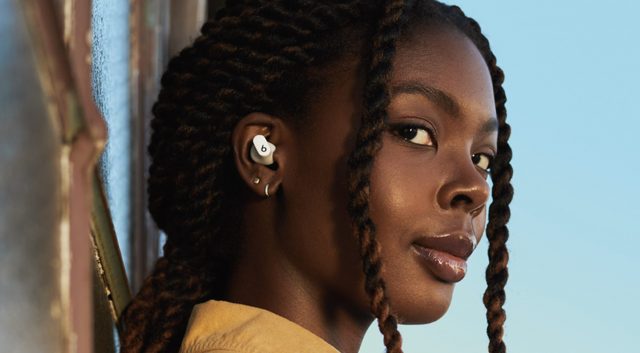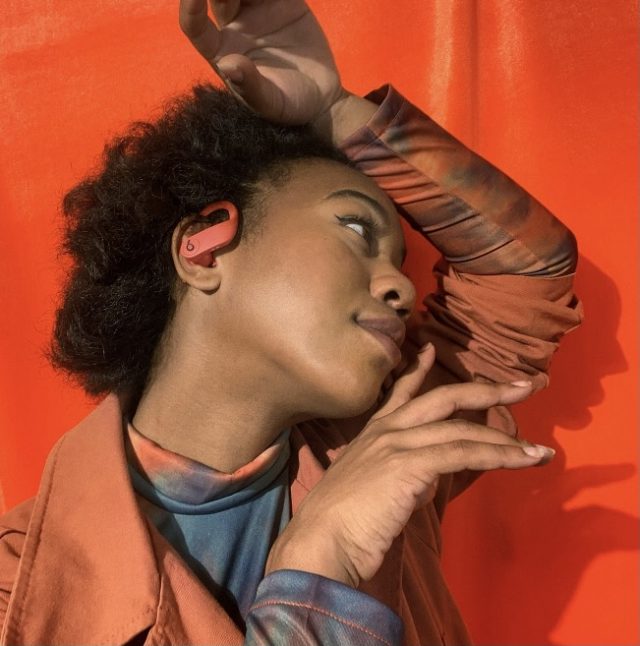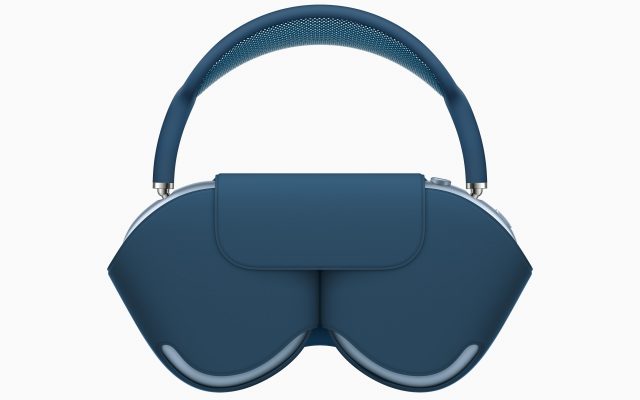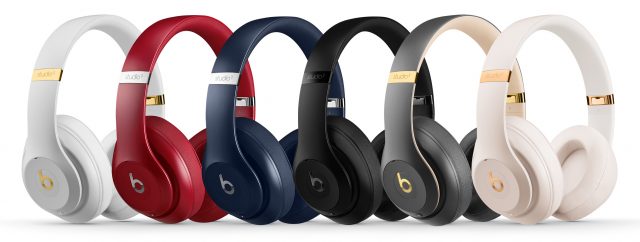
Shopping for Apple wireless earbuds or headphones seems simple enough:
- If you are on a budget, Apple’s second-generation AirPods earbuds will run you $159 (see “Apple’s Wireless AirPods Were Worth the Wait,” 20 December 2016).
- If you crave more features and have a bit more to spend, try the $249 AirPods Pro with added features such as active noise cancellation (but note that a higher price doesn’t automatically mean they’re better—see “AirPods Versus AirPods Pro: Apple’s Earbuds Go Head-to-Head,” 3 July 2020).
- If you want premium audio and have few cash constraints, the $549 AirPods Max awaits (see “Apple’s AirPods Max Headphones Are Pricey but Good,” 15 March 2021).
The decision gets more complicated, though, if you broaden your search to include earbuds and headphones from Apple subsidiary Beats by Dre. That introduces new styles, such as earbuds with ear hooks for athletes, earbuds connected with cables so they are more difficult to lose, earbuds you can jam deeply into your ear canals, and headphones of different sizes, styles, and prices to complement the AirPods Max.
It’s reasonable to include Beats audio products in such a decision because they often rely on Apple’s proprietary H1 or W1 chips that enable capabilities such as iCloud syncing, hands-free “Hey Siri” use, automatic switching among Mac and iOS devices, and more. But not every Beats product supports every such feature, which can be confusing.
I’m here to help. This article separates Apple and Beats products into categories so you can get a better sense of which would best fit your needs and lifestyle. It’s not a full feature accounting, but I’ve assembled a massively detailed companion chart so you can more readily decipher which headphones or earbuds are best for you. (If you see ways to improve the chart, let me know in the comments below.)

First, Beats Studio Buds Mini Review
Most of the products in this roundup have been on the market for months or years, so many people are at least somewhat familiar with them. However, Beats shipped the $149.99 Studio Buds earbuds just last month, so almost no one will know about them. Before we get into the comparisons, let’s take a quick look.
The Studio Buds are positioned as an alternative to the AirPods line. They cost slightly less than the AirPods but include high-end features like active noise cancellation found in the AirPods Pro.
You won’t mistake the Studio Buds for AirPods. There are no downward-pointing stalks, and the Studio Buds are available in black and red, as well as white. They’re a bit simpler to master, with a mechanical button jutting slightly outward from each bud instead of the AirPods’ trickier tap or squeeze controls.
The Studio Buds don’t match the AirPods Pro feature for feature, and this is where you need to pay attention. The Studio Buds rely on neither an H1 nor W1 chip but, reportedly, MediaTek’s TWS chip, which provides only some of the capabilities of Apple’s chips and is more friendly to Android users. Apple users won’t have problems with the Studio Buds, but they have an odd blend of feature inclusions and omissions.
Like the AirPods, the Studio Buds pair with an iPhone instantly with the usual info card that shows battery status. They offer hands-free “Hey Siri” support. You can make them beep via Find My if you lose track of them. They pop right up in Control Center, with active noise cancellation and transparency controls accessible beneath the volume slider.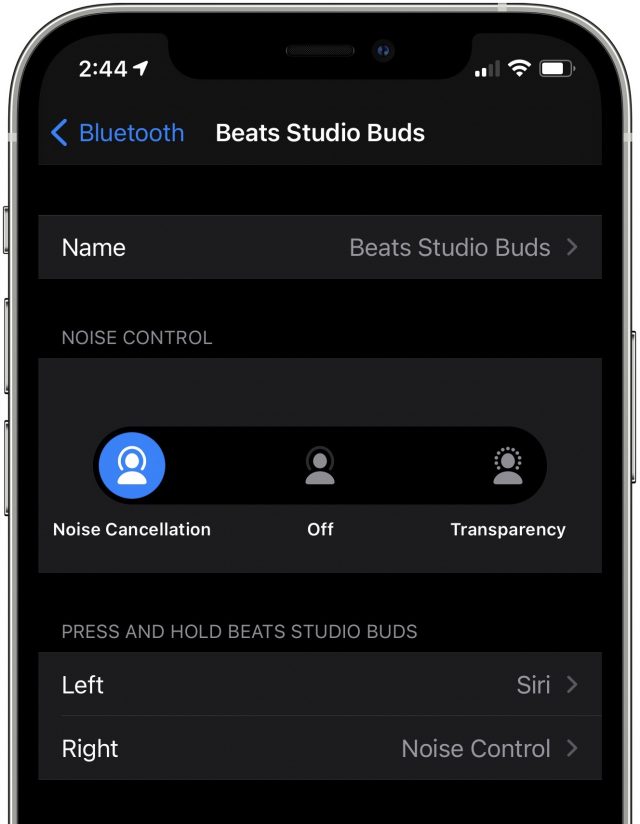
On the downside, the Studio Buds won’t automatically be set up and become available on all Apple devices signed in to iCloud with the same Apple ID (which also means they can’t switch automatically from device to device). They don’t support audio sharing, nor do they have in-ear detection, so music won’t pause when you take them out of your ears or resume when you put them back in.
Overall, they’re certainly worth considering, but be aware that they have a somewhat odd mix of features.
On to the comparisons!
Best Options for High Tech Features
Unquestionably, if you crave the most features, the Apple-branded products rule the roost.
Only the AirPods Pro and AirPods Max support spatial audio with dynamic head tracking in songs and movies. Apple says that dynamic head tracking creates a more immersive experience for spatial audio by adjusting the audio dynamically as you turn your head. The feature is available now in movies that support it, and it’s coming for songs in Apple Music later this year.
Another advanced feature that’s exclusive to Apple-branded earbuds is wireless charging. The second-generation AirPods and the AirPods Pro support this feature via Qi-capable battery cases, but no Beats product does. That’s a shame since even inexpensive third-party earbuds like Aukey’s $39.99 Wireless Charging Earbuds offer wireless charging.
Best Options for Finicky Fitters
If your earbuds or headphones don’t fit properly, what can you do about it?
Most of the earbuds are bundled with several sets of silicone ear tips in a variety of sizes for an effective ear canal seal. That design also gives you the flexibility to experiment with silicone and foam tips from third parties. The exceptions are the AirPods, which don’t include tips in the box and are designed to be one-size-fits-all—although Minnesota-based Hearing Components has figured out how to put foam tips on them. Hearing Components also offers tips made with its signature Comply foam for AirPods Pro, Beats earbuds, and earbuds from many other makers. I swear by Comply tips.
The Beats Flex can be made to fit better than the other earbuds in a particular way—they are the only ones you can jam deeply into your ear canals for an extra-secure fit along with the best ear canal sealing. I like this a lot.
In the headphone category, all models let you telescope the ear cups upward or downward to correspond with the size of your head. The AirPods Max do it most elegantly, with metal arms that have just the right amount of resistance as they move up and down. They attach to the cups with a pivoting, rotating design that balances and distributes pressure for enhanced comfort.
If you have a big head, the Beats Solo Pro may not be for you. Some users have complained that their telescoping isn’t generous enough to position the cups over the ears without feeling pressure and discomfort atop the head; I can attest to this. Others, such as TidBITS managing editor Josh Centers, feel that Beats headphones clamp too tightly to the head. The AirPods Max doesn’t have any of these problems.
I can’t speak to the comfort of the Studio³ and Solo³ headphones, which I didn’t test. Also, the Solo³ came out way back in September 2016, which makes it “old,” as a Beats spokeswoman told me—perhaps partly to signal that it may not be long for this world.
Best Earbuds for Active Lifestyles
Many use AirPods while exercising, but they’re arguably not ideal for it. They’re prone to falling out since little more than ear canal friction keeps them in place.
Certain Beats earbuds are friendlier to athletes. The PowerBeats and PowerBeats Pro boast over-the-ear loops, so they remain in position more securely (see “AirPods Versus PowerBeats Pro: Same Parent, Different Paths,” 17 September 2019).
The Beats Flex earbuds tackle the problem differently. Because they fit deeply within your ear canals, they are unlikely to dislodge during workouts.
You sweat when you exercise, so earbuds should have built-in moisture protection. With one exception, all the earbuds have IPX4 protection from perspiration and water splashes. Only the Beats Flex earbuds lack such protection, rendering them less appropriate for athletes despite how well they stay in your ear canals.
None of the headphones in this roundup have moisture protection, but you shouldn’t be wearing them for exercise anyway.
In athletic situations, it can also be helpful for pairs of earbuds to be connected with a cable so they stay together and are harder to lose. The Beats Flex and PowerBeats earbuds feature this design, so you can hang them around your neck like a scarf when you aren’t using them.
As a bonus, the Beats Flex earbuds magnetically clip together on your chest to hold them in place, pausing the audio as soon as they click together. And, uniquely, their controls are on the cord, split between the left and right ends.
Best Headphones for On the Ear or Over the Ear
In the realm of headphones with round, cushioned cups for the left and the right ears, there are two design schools of thought. Should the cups be large enough to cover and encase the ears, or smaller so that they rest upon the ears?
The AirPods Max fit into the former over-ear category. Their huge cups envelop your ears but put no pressure directly on them. This makes the headphones very comfortable—assuming you don’t wear glasses, which introduces an unwanted physical element that can trigger pain after a while. Beats Studio³ headphones are also over-ear models, but they are less bulky than the AirPods Max. I can’t say much more about them because I’ve never handled them.
The older Solo³ and the newer Solo Pro headphones are on-ear variants. Some prefer the on-ear approach, but I have found the pressure on my ears to be tolerable only for an hour or two. Because I wear glasses, they become even more uncomfortable over long periods. That’s why I favor earbuds.
Best Options for Active Noise Cancellation
Active noise cancellation (ANC) has been available on headphones for a while, and the feature has more recently migrated to earbuds, along with the complementary transparency mode.
ANC filters out outside noise—particularly constant background noise—so you can focus on your audio. Because noise-canceling earbuds and headphones also block outside sounds passively, transparency mode lets you keep listening to your audio while bringing outside sounds in.
Products in this roundup that support ANC include three sets of headphones (AirPods Max, Solo Pro, and Studio³) and two sets of earbuds (AirPods Pro and Studio Buds).
Alas, they aren’t equivalent. You’ll find that the quality of the ANC and transparency mode is in rough proportion to what you pay. The pricey AirPods Max features the best ANC I have ever experienced, whereas the less-expensive Beats Solo Pro headphones and the AirPods Pro earbuds are merely pretty good.
ANC on the Studio Buds is mediocre. In my testing, I found it useful in mildly noisy environments, such as at my home office desk in my busy household, but marginal on a cacophonous city street or loud city bus. It did only an OK job of cutting out the faucet noise when I was listening to a podcast while washing the dishes. However, the Studio Buds’ ANC is still better than ANC on lower-cost third-party buds such as Aukey’s $59.99 Hybrid Active Noise Cancelation [sic] Wireless Earbuds. Again, you tend to get what you pay for.
I can’t attest to the quality of the Studio³ headphones’ noise cancellation because I didn’t test them.
The AirPods Max and Solo Pro headphones make ANC and transparency mode a breeze to use via simple push buttons. Using ANC on AirPods is not difficult, but it does require you to memorize certain tapping or squeezing actions, and it may also involve a quick dive into Settings to customize those actions. Using ANC on the Studio Buds is similar, though via a mechanical button on each earbud.
Best Options for Optimal Audio Quality
I’m far from an audiophile, so I’m not one to wax poetic about the nuances of sound emanating from various earbuds and headphones. Much of that is lost on me, but not all.
Unsurprisingly, the over-ear AirPods Max headphones sound amazing. They also cost $200 more than the next most expensive device, the Beats Studio³ (which I can’t comment on). The Solo Pro headphones sound premium, too—but their on-ear design doesn’t do as good a job of physically dampening external sounds so you can immerse yourself in whatever is playing.
Earbuds can’t compete with headphones for audio quality, and there’s variation even within the category. The PowerBeats Pro has an ardent fan base because of their audio quality, and I can see why. Expect similar quality from the PowerBeats, which are basically the PowerBeats Pro connected by a cable. Most people seem to agree that the audio from the AirPods Pro is good, but not great, and a bit better than the AirPods. The Studio Buds provide decent sound for the money.
A bit of advice: if you just want decent earbuds for calls, podcasts, casual music consumption, and watching videos on your iPad or Mac, don’t spend more than you have to. The cheapest product in this roundup, the $50 Beats Flex, has performed nicely for me in all respects.
Best Options for Protecting Your Earbuds or Headphones
You want your earbuds or headphones to be properly protected when you are not using them. In this category, the Apple and Beats products are all over the map.
Only one set of headphones, the Beats Studio³, comes with a hard case to protect the product when not in use. The Beats Solo³ and Solo Pro have soft cases that encase the headphones, but they offer less protection from impacts than a hard case would.
The Smart Case that Apple bundles with the AirPods Max provides only partial protection. It’s made of a pliable, plasticky fabric and accommodates the headphones’ cups once you rotate them so the AirPods Max lies flat. A flap atop the Smart Case holds the cups in place. But the rest of the product remains entirely exposed. And the Smart Case looks dumb.
In the earbud realm, the AirPods, AirPods Pro, and Studio Buds include hard-shell power cases for protection and charging. The PowerBeats Pro also includes a hard case, but it doesn’t charge.
On the lower end of the line, the PowerBeats include only a soft carrying pouch, and Beats Flex users get nothing to protect their buds.
Best Options for Color Choice
You can get the AirPods or AirPods Pro in any color you want as long as it’s white. However, you can get nice covers for the AirPods or AirPods Pro case if you want something other than white on your desk or counter. And for a high price, Minnesota-based ColorWare will be happy to sell you AirPods in custom colors or color combos.
The AirPods Max is available in five two-color combinations (such as a model with a red headband and pink ear cups).
Every Beats product comes in various colors ranging from the subdued to the aggressive, with the Studio³ and the PowerBeats Pro providing the most color choices (six and five, respectively). The Studio³ options even include a couple of two-color combinations. Interestingly, colors in the Beats line don’t always repeat from one product to the next—if you want yellow, for instance, the Beats Flex is your only option.
Your Best Buds
As you can see, even within the Apple and Beats product lines, there’s a dizzying array of price points, options, and alternatives. I hope you find this article and its companion chart helpful when you’re next in the market for earbuds or headphones. I certainly did—I put this all together because I was confused by all the Apple and Beats options and wanted to make better sense of them.
Contents
- New Members
- Two Siri Remote Sleeves That Incorporate AirTag Pockets
- The Ultimate Guide to Choosing Apple/Beats Audio Gear
- The Hidden Trick for Capturing Document-Modal Dialogs in Mac Screenshots
- Brave Search Public Beta Offers Alternative to Google
- Apple Opens Public Betas for macOS 12 Monterey, iOS 15, iPadOS 15, watchOS 8, and tvOS 15
- Apple Justifies iOS App Store’s Tight Control in White Paper

